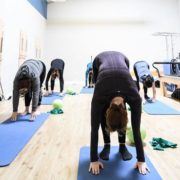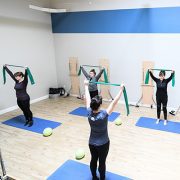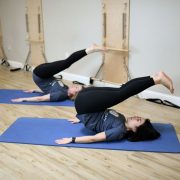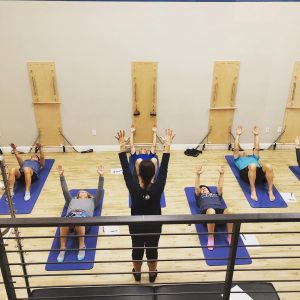Why Pilates?
Why Pilates?
If you’ve ever experienced muscle and/or skeletal pain, it was probably the result of one or more mechanical stressors occurring in joints or muscles. When I treat a patient, I am often working to help them change the mechanics of their movement and therefore decrease or eliminate those stressors. It’s one of the main reasons why I incorporate Pilates into my treatments. It’s also why most of my patients will tell you that it is often difficult to tell where physical therapy leaves off and fitness exercises begin — which is precisely the way it should be.
Pilates isn’t just about strength and balance, it’s about body mechanics.
Each exercise is carefully designed to direct and reinforce the way in which a healthy musculoskeletal system should function. By practicing Pilates, you are strengthening your muscles correctly in a way that is conducive to all forms of exercise, as well as improving posture and balance. It’s a really great supplement to physical therapy because as you’re retraining or rehabilitating a specific part of your body, you have the opportunity to match that progress holistically.
Many people who come to us with back pain think that their pain would prevent them from participating in an exercise program like Pilates – but the truth is, it’s the opposite! Guided, individualized Pilates combined with a physical therapy regimen is actually one of the best things you could do for your back. We even offer a specific at home program designed for people with back pain! It’s incredibly beneficial for clients dealing with pain or injury to have the support system of a physical therapist and a Pilates instructor working in tandem to find the right movements to rehabilitate each particular individual.
Our goal is always to get our clients back to their full range of movement and activities.
We NEVER want to avoid any movement permanently in order to avoid pain. But on the road to that full recovery, the structure of Pilates and the opportunity for physical assistance can be an extremely powerful counterpart to physical therapy. Pilates strengthens your entire body, starting from your core, which naturally prevents future back issues stemming from muscular weakness or imbalance. Furthermore, Pilates (combined with PT) teaches correct movement – which is the number one way to relieve any current pain!
Are you experiences nagging back pain and want to incorporate pilates to help? We offer a program just for you! Our At Home Pilates 101 Get [Your] Back to Health program might be perfect for you, to apply and learn more CLICK HERE! We’d love to have you start your Pilates journey with us.







